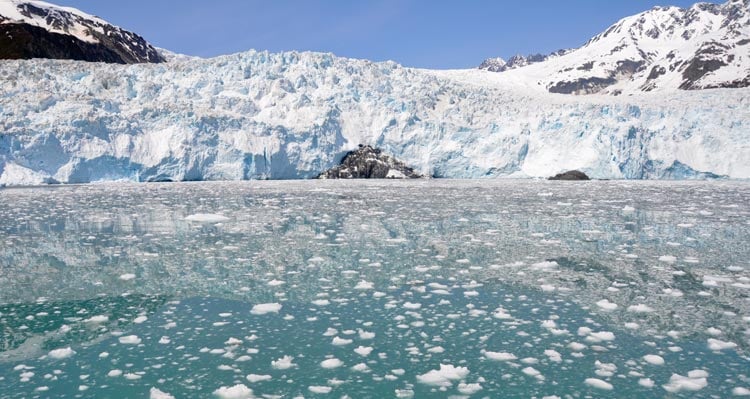Seeing a tidewater glacier up close is a thrill. Located in the remote and remarkable places where blue waters meet giant walls of ice, tidewater glaciers represent the ancient reaches of the planet, and help put our modern lives into perspective.
In Kenai Fjords National Park, over half of the land mass is covered by the enormous Harding Icefield, a thousand-foot block of ice that dates to the last Ice Age. The Harding spills out in all directions in the form of glaciers. Some stretch northwest into rugged hills of the Kenai Peninsula. Others reach as far as the sea along the craggy coast of the Gulf of Alaska.
A tidewater glacier is a mass of snow and ice that forms on land but terminates in the ocean. It's unique from a mountain or hanging glacier for this reason.
Glaciers are always changing.Tidewater glaciers terminate abruptly at the ocean, and gravity forces undermine the fronts of ice, causing chunks to fall off. Icebergs are floating chunks of ice that calve off the terminus of a glacier. This adds fresh water and nutrients to the cold sea water and helps produce an incredibly productive ecosystem. Some calving can produce chunks up to 200 feet high.
There are 38 glaciers flowing from the Harding Icefield, five of which reach tidewater. Three of them, the Northwestern, Holgate and Aialik, can be seen with Kenai Fjords Tours.

The Northwestern Fjord has been steadily receding for over a century. As it does so, it reveals previously un-seen landscapes, including islands in Northwestern Fjord. Meanwhile, the Holgate Glacier is actually advancing. The Aialik glacier is considered to be 'stable'.
The warm sun of late spring and early summer bring constant shifts to the glaciers of Kenai Fjords. Calving can happen at any point, but researchers say these glacier are most active in May and June.
Insider tips, inspiration and deals — delivered straight to your inbox.